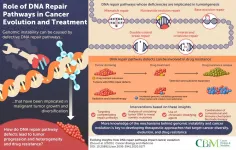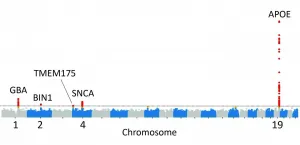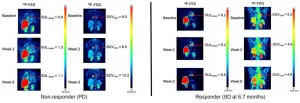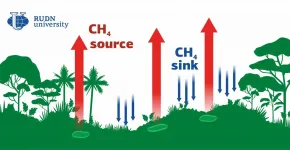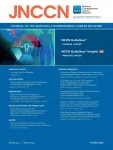(Press-News.org) The ongoing fight of science against cancer has made great strides, but cancer cells have not made it easy. The complexity of cancer cells and their adaptive evolutionary nature complicate the search for effective cures. Multiple DNA repair pathways in healthy cells typically work to rectify DNA damages caused by sources within the organism, like spontaneous DNA mutations, or from outside, like ultraviolet radiation.
But what happens when these pathways malfunction? It is known that deficiencies in these pathways increase the instability of the genes, and this causes cancer to develop. Therefore, detailed knowledge of how DNA repair pathways participate in this process is crucial for tracking tumor progression, understanding the emergence of drug resistance, and developing efficient therapeutic interventions.
To this end, a group of scientists from China examined five critical DNA repair pathways and their impact on cancer evolution by reviewing the findings of the latest published research. "Different types of DNA damages have corresponding repair pathways to efficiently fix them," says Dr. Jiadong Wang, associated with Peking University Health Science Center and a member of the research team. "So, it is not surprising that particularly defective DNA repair pathways are associated with specific cancers."
They first looked at the mismatch repair system, which eliminates spontaneous mutations to ensure accurate DNA replication. A deficiency in this system, it was found, causes microsatellite instability (MSI), wherein nucleotides, the building-block components of DNA, are either longer or shorter in crucial genes, compared to the normal size, and continue replicating beyond their limit. MSI is clinically associated with 10-15% of colorectal, ovarian, endometrial, and gastric cancers.
Next on their checklist was the nucleotide excision repair (NER) pathway, which recognizes and repairs a wide range of structurally unrelated DNA lesions caused by DNA structural damage. Besides increasing the risk of bladder and breast cancers, an NER deficiency can cause Cockayne syndrome and xeroderma pigmentosum, an ultraviolet light-induced genetic disorder that causes many types of skin cancer.
The base excision repair (BER) pathway, on the other hand, repairs DNA "base lesions" that inhibit cell growth. These lesions are caused by spontaneous DNA decay and external factors like radiation and cytostatic drug treatment. BER pathway components and their deficiency are associated with a high risk of lung, pancreatic, and breast cancers.
Double-strand breaks (DSBs), caused by DNA replication or ionizing radiation, can lead to point mutations, chromosomal rearrangements, and cell death. Two pathways exist to repair DSBs--homologous recombination (HR) and non-homologous end joining. The inactivation of DSB repair genes is closely associated with cancer, and a large fraction of hereditary breast, ovarian, and prostate cancers is caused by BRCA1 and BRCA2 mutations--which are key players in the HR pathway.
Lastly, the scientists discussed the interstrand crosslink (ICL) repair pathway. ICLs, formed from aldehydes and chemotherapy drugs within the body, block essential cellular processes like replication and transcription. They are repaired by the Fanconi anemia (FA) pathway; a defect in this pathway leads to genomic instability, bone marrow failure, and an increased risk of breast and ovarian cancers.
The review combines all these findings, previously scattered across different research papers, and takes them ahead to discuss clinical interventions that could address such pathway damage. Many potential suggestions, ranging from the use of chromatin-modifying agents to the combined application of chemotherapy/radiotherapy with immune checkpoint blockade therapy, have been suggested.
Dr. Ning Zhang, another member of the team, is optimistic that knowing more about DNA repair pathways could be one of the elusive keys to curing cancer. "Specifically, the relationship between DNA repair pathways and cancer evolution need to be explored, because we have seen how closely connected the two are," he says.
Cancer has persisted for so long because of its resilient strategies to live on despite the best efforts of medicine. Perhaps this close look at the role of DNA repair pathways will arm us with another valuable weapon in the fight against cancer.
INFORMATION:
Reference
Authors: Jiadong Zhou (1), Xiao Albert Zhou (1), Ning Zhang (2,3), Jiadong Wang (1)
Title of original paper: Evolving insights: how DNA repair pathways impact cancer evolution
Journal: Cancer Biology & Medicine
DOI: 10.20892/j.issn.2095-3941.2020.0177
Affiliations:
(1) Department of Radiation Medicine, Institute of Systems Biomedicine, School of Basic Medical Sciences, Peking University Health Science Center, Beijing 100191, China
(2) Biomedical Pioneering Innovation Center (BIOPIC) and Translational Cancer Research Center, School of Life Sciences, First Hospital, Peking University, Beijing 100871, China
(3) Laboratory of Cancer Cell Biology, Tianjin Medical University Cancer Institute and Hospital, National Clinical Research Center for Cancer, Key Laboratory of Cancer Prevention and Therapy, Tianjin, Tianjin's Clinical Research Center for Cancer, Tianjin 300060, China
About Dr. Ning Zhang
Dr. Ning Zhang serves as the Director (Office of Scientific Research) at the Biomedical Pioneering Innovation Center and Translational Cancer Research Center, First Hospital, Peking University, and also works in close collaboration with the Laboratory of Cancer Cell Biology, Tianjin Medical University Cancer Institute and Hospital. Having served as a professor at various institutes, Dr. Zhang has also authored over 313 papers in various prestigious journals.
About Dr. Jiadong Wang
Jiadong Wang is affiliated with the Department of Radiation Medicine, Institute of Systems Biomedicine, Peking University Health Science Center. He has over 20 publications to his name, published in various reputed journals.
Melanoma is by far the deadliest form of skin cancer, killing more than 7,000 people in the United States in 2019 alone. Early detection of the disease dramatically reduces the risk of death and the costs of treatment, but widespread melanoma screening is not currently feasible. There are about 12,000 practicing dermatologists in the US, and they would each need to see 27,416 patients per year to screen the entire population for suspicious pigmented lesions (SPLs) that can indicate cancer.
Computer-aided diagnosis (CAD) systems have been developed in recent years to try to solve this problem by analyzing images of ...
In a study led by National Institutes of Health (NIH) researchers, scientists found that five genes may play a critical role in determining whether a person will suffer from Lewy body dementia, a devastating disorder that riddles the brain with clumps of abnormal protein deposits called Lewy bodies. Lewy bodies are also a hallmark of Parkinson's disease. The results, published in Nature Genetics, not only supported the disease's ties to Parkinson's disease but also suggested that people who have Lewy body dementia may share similar genetic profiles to those who have Alzheimer's disease.
"Lewy body dementia is a devastating brain disorder for which we have no effective treatments. Patients often appear to suffer the worst of both Alzheimer's ...
Reston, VA--Molecular imaging can successfully predict response to a novel treatment for ER-positive, HER2-negative metastatic breast cancer patients who are resistant to hormonal therapy. According to research published in the February issue of the Journal of Nuclear Medicine, positron emission tomography (PET) imaging using an imaging agent called 18F-fluoroestradiol can help to determine which patients could benefit from treatments that could spare them from unnecessary chemotherapy.
Nearly two-thirds of invasive breast cancers are ER-positive, and endocrine therapy is the mainstay of treatment for these tumors because of its favorable toxicity profile and efficacy. Should cancer progress in these patients, however, salvage endocrine therapy with molecularly targeted agents ...
Of the nine treatments and preventives for COVID-19 authorized for emergency use by the Food and Drug Administration, three are drugs made from so-called monoclonal antibodies. Such drugs provide patients with ready-made antibodies that neutralize the virus, bypassing the body's slower and sometimes less effective process of making its own antibodies.
But such therapies were developed without detailed information about how antibodies interact with the rest of the immune system during COVID-19. Faced with a new, deadly and fast-spreading disease, drug designers started work ...
Irvine, Calif., Feb. 16, 2021 -- A radioactive bone cement that's injected into bone to provide support and local irradiation is proving to be a safer alternative to conventional radiation therapy for bone tumors, according to a study led by University of California, Irvine researchers.
The study shows that this brachytherapy cement can be placed into spinal bones to directly irradiate tumors without harming the spinal cord, and the radioactive material will stay localized in the bones, which promises to virtually eliminate side effects.
Lead researcher Joyce Keyak, UCI professor of radiological sciences, presented the results at the 2021 annual meeting of the Orthopaedic Research Society, which was held virtually Feb. 12-16.
Cancers ...
ITHACA, N.Y. - Working with a "star" employee - someone who demonstrates exceptional performance and enjoys broad visibility relative to industry peers - offers both risks and rewards, according to new research from the Cornell University's ILR School.
In collaborations, stars tend to get more than their share of the credit when things go well - and more of the blame when projects don't succeed, according to "Shadows and Shields: Stars Limit Their Collaborators' Exposure to Attributions of Both Credit and Blame," published Dec. 10, 2020, by Personnel Psychology.
"We look at ...
Biologists from RUDN University described the role of tropical rainforests in the production of methane, the second most harmful greenhouse gas after CO2. It turned out that some areas of rainforests not only consumed methane but also emitted it. The results of the study were published in the Forests journal.
Although the share of methane in the atmosphere is relatively small (less than 1%), its contribution to the greenhouse effect is 20 to 30 times bigger than that of the same amount of carbon dioxide. The tropics are one of the main sources of methane. Previously, soil scientists used to focus only on swampy tropical areas, because methane-producing microorganisms live and multiply in the anaerobic conditions of swamps. As for ...
UCLA RESEARCH ALERT
FINDINGS
A new study led by researchers at the UCLA Jonsson Comprehensive Cancer Center helps identify which patients with prostate cancer will benefit most from the use of prostate-specific membrane antigen PET imaging, PSMA PET, a novel imaging technique that recently was approved by the U.S. Food and Drug Administration.
By studying different variables and risk factors, researchers created a model that can be used in the clinic to identify patients who may have more extensive disease than anticipated and identify patients who are at higher risk of prostate cancer spreading to lymph nodes in the pelvis and beyond. The team found the percent ...
In today's digital age, the use of "Internet-of-things" (devices embedded with softwares and sensors) has become widespread. These devices include wireless equipment, autonomous machinery, wearable sensors, and security systems. With their intricate structures and properties stems the need to scrutinize them closely to assess their safety and utility and rule out any potential defects. But, at the same time, damage to the device during inspection must be avoided.
Terahertz (THz) imaging, based on radiation with frequencies between 0.1 and 10 THz, is one such non-destructive method that is rapidly gaining popularity owing ...
PLYMOUTH MEETING, PA [February 16, 2021] -- New research in the February 2021 issue of JNCCN--Journal of the National Comprehensive Cancer Network examined body mass index (BMI) data for people with HER2-positive early breast cancer, and found a 5% weight loss in patients over two years in was associated with worse outcomes. Weight gain over the same time period did not affect survival rates.
"The finding that weight loss, and not weight gain, was associated with worse outcomes is unexpected," said lead researcher Samuel Martel, MD, Universitè de Sherbrooke, Quebec, Canada, who worked with researchers in Belgium, Brazil, Germany, Italy, Switzerland, and the United Kingdom, as well as the ...
